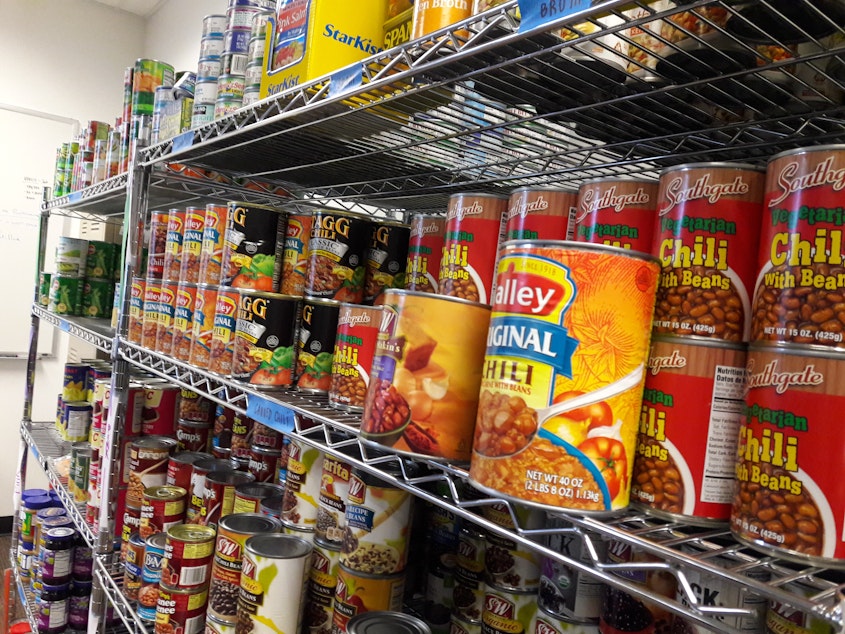More Seattleites are using food banks, but funding isn't keeping up

As Seattle’s median income has grown, so has demand for food banks.
Seattle’s food banks have seen more clients in the last year, but funding has remained flat, or in some cases declined, according to a new study from researchers at the University of Washington and Public Health Seattle-King County.
The researchers, whose work was funded by the city's new soda tax, presented the study during a City Council meeting on Wednesday.
Food banks saw an increase in visits from older adults, homeless people and working adults, the researchers explained. But to meet the new demand, some food banks have had to make some hard choices, including reducing the variety of food they offered.
“Sixty-five percent [of the food banks] reported that they had to reduce quantity of food that they provided to clients due to resource constraints," said Kaylin Bolt, a researcher with Public Health-Seattle King County, who briefed Seattle City Council members.
In 2017, about 13 percent of Seattle adults experienced food insecurity, according to the report. In general, they were people of color, people with less education and people who identify as lesbian, gay or bisexual.
Sponsored
One of the biggest takeaways from the report also showed that residents living around the Duwamish waterway faced the most obstacles in accessing healthy foods. Those barriers included income as well as travel times to food retailers that sell healthy foods.
Vegetables, milk and protein, when available, tended to cost less in poor neighborhoods, according to the report. Fruit, however, cost more.
Researchers noted that there are similar pockets throughout Seattle, especially in the north end.
Seattle collected $16 million in nine months after imposing a soda tax in 2018. Some of that money was directed to programs like Fresh Bucks that help communities buy fresh foods at participating supermarkets and farmers markets. The city also allocated nearly $270,000 for food banks from the tax this year.
Council member Debora Juarez said she she wanted more of these funds to go toward addressing food insecurity.
Sponsored
“Nothing against people wanting to do studies on obesity, but I think we got it, that’s why we passed the [soda] tax," she said.
Another way food banks might be able to serve more people? Put them on wheels.
Seattle food banks give out more than 22 million pounds of food each year. Given the increased demand, food banks would like to do more, but doing so would require additional resources.
The report suggested that to better serve clients with physical limitations or who face travel challenges in bringing enough food for a big family, food banks could offer a delivery option. If supermarkets have Instacart, why not food banks?
But Seattle food banks' wishlist is long and the demand high. They want to be able to offer more culturally appropriate foods, for example, and less processed foods.




